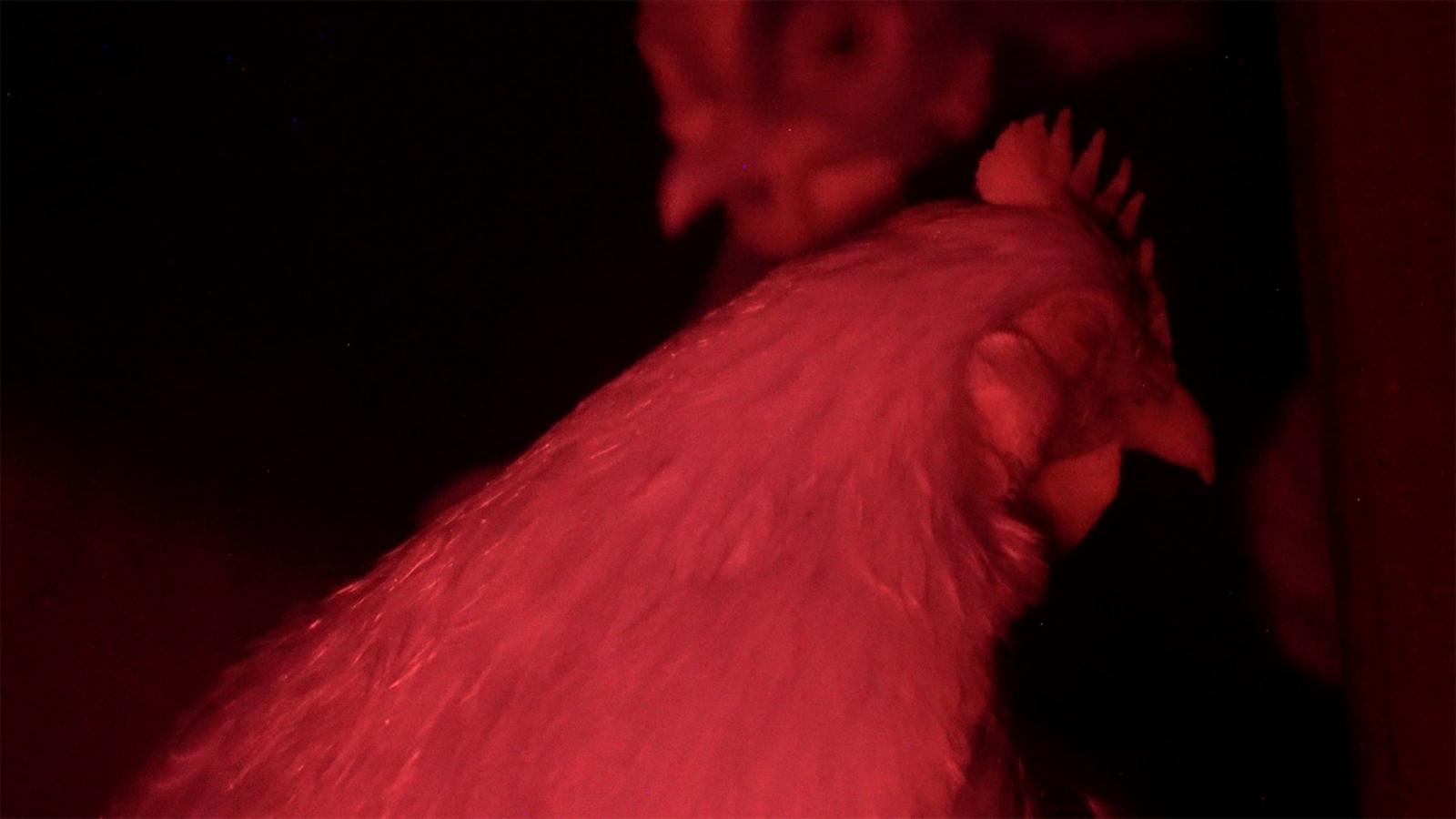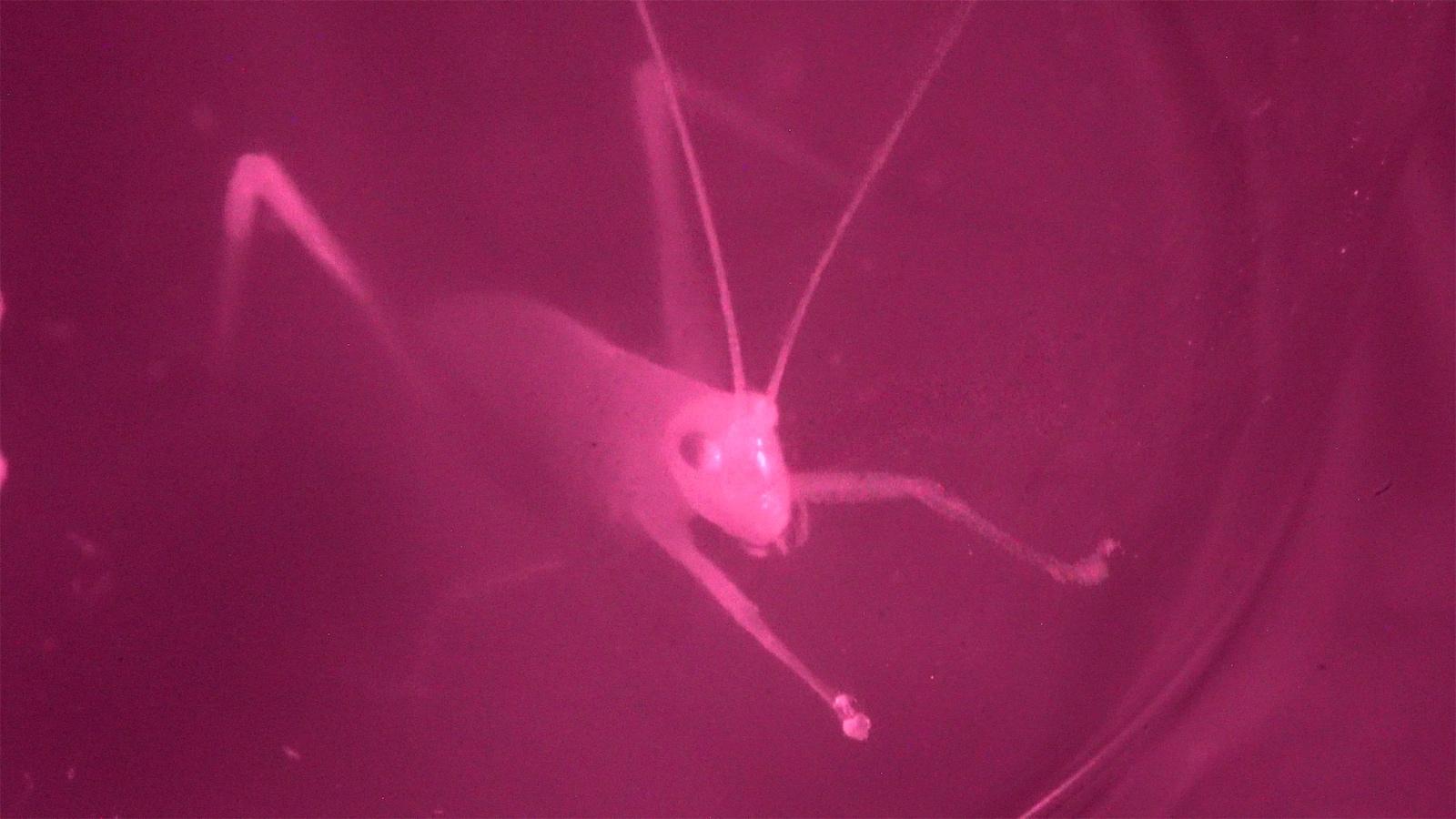Flatwing records the artist’s nocturnal journey through Kauai’s rainforest, and her futile attempt to find and record the movements of the silent crickets. Running at just over 16 minutes and shot with an infrared camera, Hollander’s footage captures many creatures of the rainforest’s nightscape—including a frog, a chicken, and various insects—in pink, red, and purple infrared light; but no crickets are to be found. Hollander presents the crickets’ absence as both a signal of the insects’ inevitable extinction and a mirror of our own human struggle to adapt to conditions of accelerated change, a grave duality symptomatic of ongoing climate crises.
Chrissie Iles, the Whitney’s Anne & Joel Ehrenkranz Curator, who organized the exhibition with Clémence White, senior curatorial assistant, said, “Working with Madeline to bring together this multifaceted exhibition has deepened our understanding of her working process. Flatwing represents years of research, producing an examination of the adaptive choreography of survival in a poetic environment of light, color, sound, and space. Investigating the tensions between art and science, this multi-sensory installation, immersing us in the hidden world of the rainforest, speaks to the ethical imperatives innate in Madeline’s practice.”
The video installation occupies the Museum’s fifth-floor Kaufman Gallery, and is prefaced by a “studio wall” displaying Hollander’s drawings, diagrams, and research materials. The adjacent Goergen Gallery showcases a sound installation created with Hollander’s field recordings of chirping, non-flat-winged crickets. The tempo of the cricket chirps within the audio files corresponds to live temperature data in New York City, building on the formula explained in the first text in Flatwing: "To convert cricket chirps to degrees Fahrenheit, count the number of chirps in 14 seconds then add 40 to get the temperature."































